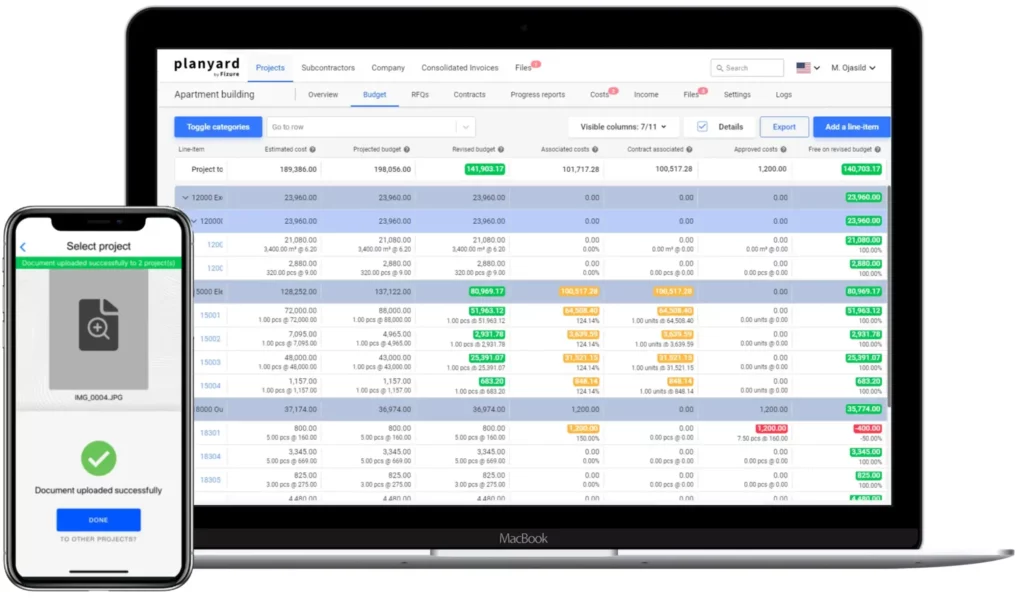Evolve Construction: Revolutionizing Project Management in the Industry
Evolve Construction: Revolutionizing Project Management in the Industry
Blog Article
Customized Building Management Software Program: Optimizing Source Allocation and Budgeting Approaches
In the realm of modern construction administration, the relevance of tailored software program options can not be overstated. These innovative tools supply a nuanced method to enhancing source allotment and budgeting approaches, important components for successful task execution. By diving into the ins and outs of just how such software program can enhance resource appropriation approaches and refine budget plan optimization strategies, a clear pathway towards heightened job effectiveness emerges. In this electronic age where precision and performance preponderate, discovering the impact of tailored building monitoring software on these crucial facets uncovers a realm of possibilities that can shape the future of the market.
Advantages of Tailored Software Solutions
Tailored software remedies offer a myriad of benefits to building monitoring firms looking for to enhance effectiveness and improve operations. By customizing software remedies to address project administration, scheduling, budgeting, and resource allowance, companies can enhance their process and achieve better performance.
One more benefit of customized software program options is the capacity to supply real-time understandings and analytics. Building management firms can leverage data-driven decision-making to keep an eye on task development, determine bottlenecks, and make adjustments promptly. This proactive strategy improves job end results and helps companies remain on track with timelines and spending plans.

Improved Source Allotment Techniques
Implementing effective resource allotment approaches is essential for building administration companies to maximize project outcomes and make best use of performance. Enhanced source appropriation techniques entail purposefully appointing employees, devices, and products to details tasks to make certain optimal utilization of resources. One vital element of improved resource allocation is the capability to precisely anticipate task requirements and allot sources accordingly. By leveraging building and construction administration software that uses real-time tracking and reporting attributes, firms can dynamically adjust allotments as project needs evolve, leading to improved effectiveness and cost-effectiveness.
Moreover, boosted source allotment techniques allow construction companies to recognize and resolve possible traffic jams or source restraints proactively. By conducting regular evaluations of source utilization and efficiency metrics, managers can make data-driven choices to redistribute sources properly and protect against delays. This proactive strategy not only improves task timelines but likewise decreases the risk of budget plan overruns due to inefficient source allotment.
Budget Optimization Methods
To accomplish ideal financial efficiency in building and construction projects, efficient budget plan optimization techniques play a pivotal role in making sure cost control and project success. One vital method is the facility of a detailed job budget plan that allocates sources based upon concern and essential requirements. By clearly defining the range of work, establishing realistic cost estimates, and constantly tracking expenditures, building managers can recognize possible cost overruns beforehand and take restorative activities. Furthermore, carrying out worth design methods can assist streamline job prices without compromising quality. This includes examining each job part to identify chances for cost savings while maintaining efficiency standards. In addition, leveraging historical data and sector benchmarks allows building supervisors to make educated choices regarding budget plan allotments find this and recognize locations where costs can be maximized. By integrating these budget optimization techniques into building monitoring software program, job stakeholders can enhance economic preparation, source appropriation, and overall budget administration to drive task success and profitability.

Effect On Job Effectiveness
Maximizing building and construction management software application can significantly enhance task performance by simplifying interaction, boosting collaboration, and facilitating data-driven decision-making. By systematizing job details, stakeholders can conveniently access real-time updates, minimizing delays brought on by miscommunication or outdated information. Improved partnership features enable employee to function with each other effortlessly, despite their physical place, cultivating a much more natural and effective job environment. Furthermore, building management software can give useful insights through information analytics, allowing sites job supervisors to make educated decisions promptly and accurately.
Moreover, the automation of routine jobs such as scheduling, budget monitoring, and resource appropriation can liberate valuable time for task groups to focus on vital activities, eventually speeding up task shipment. The capability to keep track of task progress in real-time and recognize potential traffic jams allows positive analytic, protecting against issues from escalating and creating delays. Generally, the effect of customized building monitoring software program on job efficiency is undeniable, using a competitive benefit by enhancing process and maximizing efficiency.
Future Trends in Construction Software
As the building sector proceeds to evolve, innovations in innovation are forming the future landscape of building and construction software application options. One significant fad imminent is the increasing integration of expert system (AI) and machine knowing capacities in building software. These technologies have the potential to change how construction projects are handled by making it possible for anticipating analytics, automated decision-making processes, and boosted job understandings.
One more future pattern in construction software is the growing focus on cloud-based options. Cloud technology supplies raised versatility, scalability, and ease of access for building groups, permitting real-time cooperation and information sharing across project stakeholders. This shift towards cloud-based software is expected to enhance task performance, enhance communication, and improve total job end results.
Additionally, the increase of Building Info Modeling (BIM) is anticipated to continue forming the construction software landscape. BIM software helps with 3D modeling, visualization, and information management, resulting in boosted job control, lowered errors, and enhanced job end results. Accepting these future fads in building software will be link critical for companies looking to remain affordable and drive advancement in the industry.
Final Thought
Finally, tailored construction management software provides various advantages such as boosted source allotment methods and budget plan optimization strategies. This software program has a considerable influence on job effectiveness by streamlining procedures and boosting total efficiency (construction software). As innovation remains to development, future patterns in building software are anticipated to further maximize source appropriation and budgeting methods for building tasks
Report this page